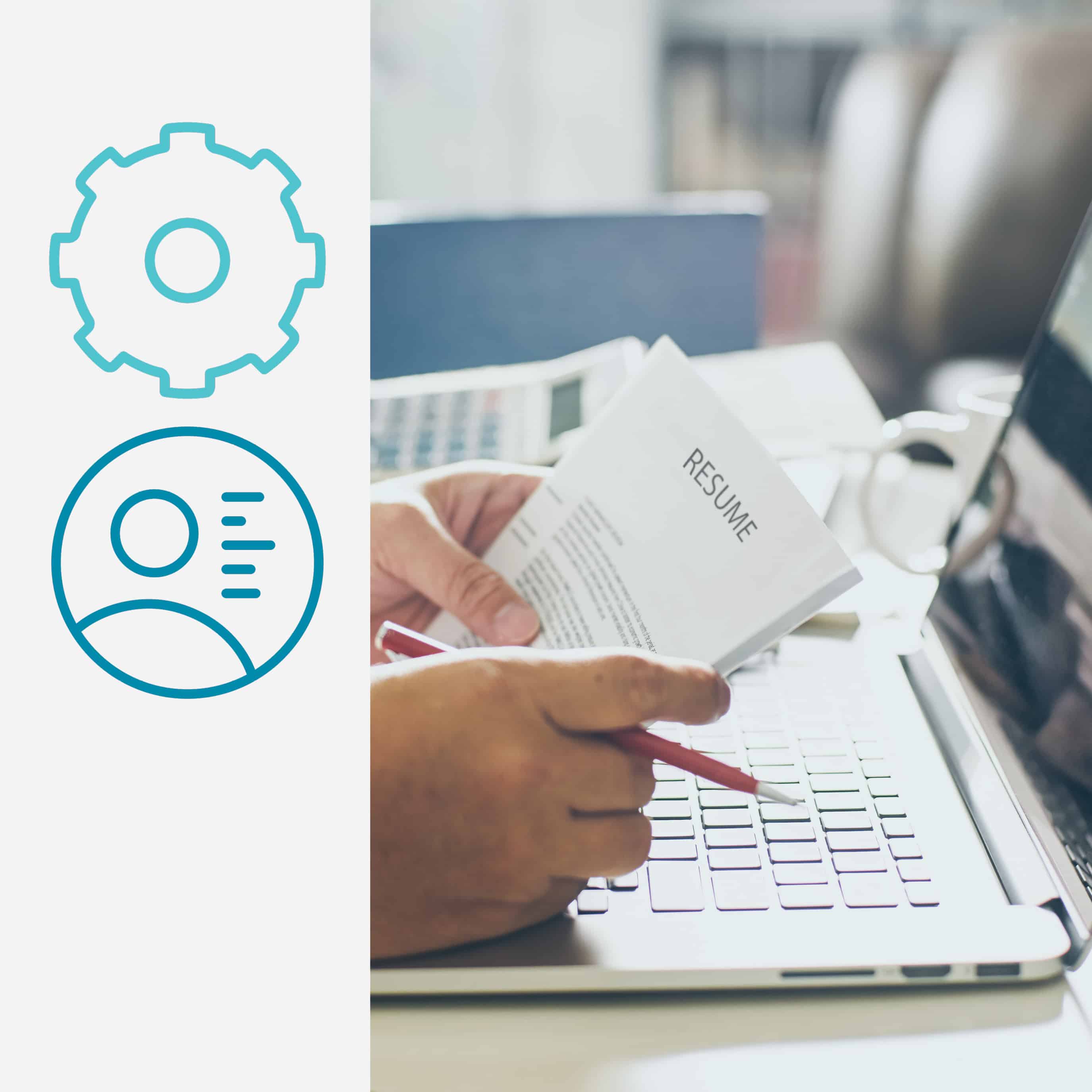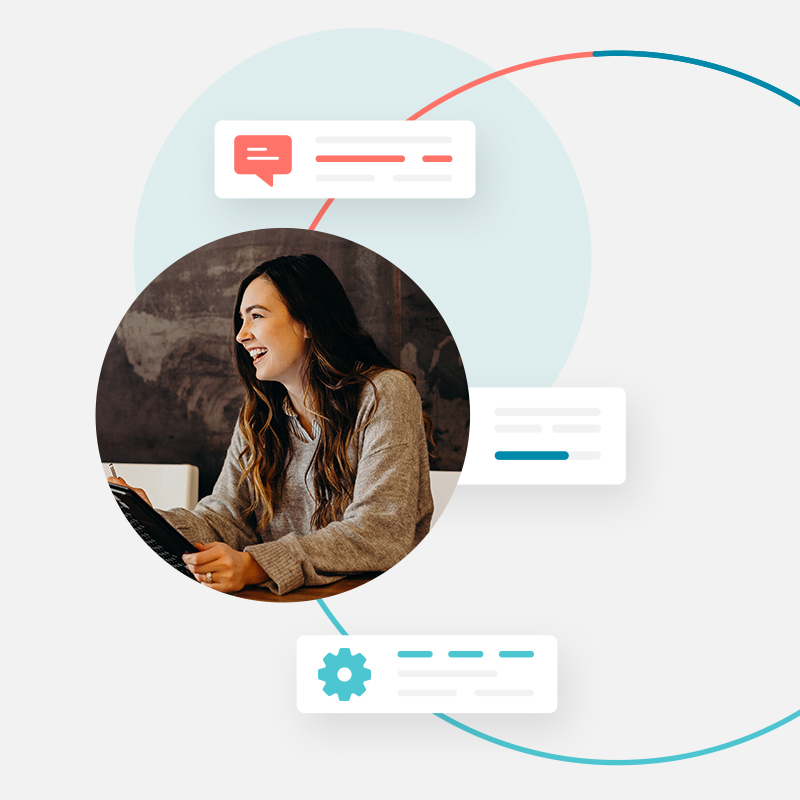The use of AI in HR has exploded in recent years.
The increasing interest in this technology is in line with its broader adoption within organizations at large. Even following the onset of the COVID-19 pandemic, 42% of companies continued investing in AI at the same rate as before, and 24% increased their investment, according to Gartner research. Even in tense economic circumstances, companies were willing to bet on AI.
The payoff for those investments can be huge. Artificial intelligence (AI), machine learning, and automation can provide HR teams with support in their daily tasks, as well as deep insights. HR leaders are then empowered to focus their time serving as strategic advisers to the business.
Here’s what you need to know about AI in HR and how you can leverage these cutting-edge tools as part of your HR tech stack.
What Is Artificial Intelligence?
AI is a branch of computer science that focuses on building machines capable of performing tasks that typically require human intelligence. Automation, sometimes confused with AI, is not a subset of artificial intelligence. Automation only executes instructions set by humans. It doesn’t mimic human intelligence or reasoning.
AI is often classified into types, depending on its sophistication.
Narrow AI
Narrow or weak, AI is the only artificial intelligence currently in use. Tools we use daily, like Alexa, Siri, and other smart assistants, are classified as narrow AI because they operate within a narrow scope and under limited constraints. Many HR software tools on the market now have built-in narrow AI capabilities.
Every application of AI on the market today falls under this category, including machine learning, robotics, and natural language processing.
Machine learning is a method of data analysis wherein an AI system processes data, extracts insights, and learns to make decisions based on the data with little human intervention. Machine learning is commonly used to support workforce analytics and other HR applications.
Strong AI
Artificial general intelligence (AGI), or strong AI, is the next evolution of AI when computers reach human-level intelligence. AGI only exists in theory so far, but scientists are on the verge of success, with some estimates predicting the advent of AGI as soon as 2029.
Artificial superintelligence is the hypothetical stage where machines far surpass human intelligence and even achieve artificial consciousness. Though just a possibility right now, rapid advancements in AI technology could bring about artificial superintelligence in our lifetime.
What You Need to Know About AI in HR
HR is in a unique position to benefit from AI tools. Your HR tech stack already generates significant amounts of employee data. Rather than passively collect and store that data, you can use AI to extract insights from it to help inform your talent strategy.
The more data you can provide to AI tools, the more accurate the insights become. AI tools, especially machine learning, learn to identify patterns and trends from data. At a high level, AI-powered insights can provide direction for identifying the best places to advertise job openings, spotting workers at the greatest risk for leaving, and highlighting opportunities to close skills gaps.
The Impact of AI in HR
Here are some of the benefits and risks of implementing AI tools within your organization.
Benefits of Using AI in HR
AI tools can optimize your processes in ways that humans alone simply can’t. Here are some of the primary benefits of introducing AI into your HR processes.
Save Time
AI tools have the power to free up a lot of HR professionals’ time, which they can then devote to more strategic work. Many critical HR tasks are transactional and highly time-consuming, such as payroll administration and data management. These can be optimized by the use of AI-powered software so you and your team can spend more quality time on high-impact projects.
Save Money
Integrating AI into daily operations can improve accuracy and efficiency, saving significant spend on labor.
AI tools can also help you make better hiring decisions, resulting in higher employee longevity and reducing turnover costs.
AI tools also empower HR and direct managers to use human talent better, producing higher productivity. For example, AI software can recommend career moves to employees and project a path to achieving their goals by integrating learning resources, potential career paths, and employee assessment data.
Access New Insights
Predictive analytics can extract and provide insights based on your existing employee data. AI can use trends in data to generate suggestions to support your talent strategy. These insights can help you make better decisions, enabling your team to work alongside leaders to fulfill your company’s business needs.
Drawbacks of Using AI in HR
Ethics—especially around safety and privacy—remain a primary concern for using AI in HR for many leaders. Employee data provides countless insights into optimizing people processes and productivity, but it also presents risks from data breaches or misuse.
Risks to Privacy
These risks to privacy and security can make the governance of AI in HR especially challenging. Work with your legal team or an HR ethics consultant to develop a robust ethics code to govern the use of AI in HR, and train your team in employee data protection best practices.
Poor Use of Resources
Without clear uses, it’s challenging to make the most of AI technology. Before implementing AI in HR, define a very clear use case for it. This definition will help you identify where AI can have the most significant effect on your company so you can create the biggest return on your investment.
Replication of Human Bias
The potential to program and replicate human errors is one of the greatest risks of AI. Without qualified oversight, AI predictions can become self-fulfilling prophecies.
In most cases, AI minimizes bias since it relies on data to make decisions. But AI results are only as good as the data you put in. Make sure that your data is objective and relevant to your goals. If you’re using AI to narrow down a list of candidates, for example, gather skills data that actually correlates with high-performance on the job rather than a certain number of years experience or a specific degree.
The key to leveraging the benefits of AI in HR is by understanding the technology’s potential risks and limitations. When you understand those risks and take precautions against them, you can implement AI in your department with safety and compliance.
What AI Can Do for Your Organization
AI can help your HR team contribute more strategic insights and suggestions during business planning conversations. Predictive analytics offers a birds-eye view of workforce trends, and AI tools can support both your HR team and the workforce. These tools, used in unison, provide your team with insights and abilities to drive business results through your talent strategy.
AI serves two primary functions in HR:
- Automating simple tasks: AI can be used to speed up repetitive tasks that drain a lot of the HR department’s time, like sorting through resumes.
- Providing insights: AI can generate trends and insights to help you better understand your workforce, allowing you to make people decisions with greater confidence.
These two functions of AI in HR aren’t isolated from each other. With more time to spend on strategy, HR professionals can contribute to the business in fresh ways.
For example, if business leaders want to embrace strategic agility, AI tools can analyze current workforce data to identify where the workforce stands now. HR can then propose a course of action to achieve that strategic goal using AI-extracted insights.
Are You Ready to Adopt AI in Your Business?
HR software is trending towards higher usage of AI and automation, so you may have some of these elements already included in your tech stack. But adopting AI technology as part of your talent strategy requires intentional planning to be effective.
The most crucial element of a successful AI implementation is identifying why you’re incorporating it in the first place. Without a clear use case, you won’t know what tools to look for, and your implementation won’t be focused enough to optimize its use.
Don’t adopt AI because you feel pressured. Identify your HR pain points, and then see if AI solutions exist. An example of a good use case for AI in HR is to support internal mobility. Using aggregated data, AI can match employee development resources to career path options, making opportunities for growth more transparent to employees.
As you implement new AI software, work closely with IT to identify where you can achieve the quickest returns on your investment. Train your HR team to think more strategically about their role and how they use new technology to improve their processes.
Most HR software tools on the market already incorporate AI algorithms, so chances are high you’ve already adopted some form of AI in HR at your company. Work with your vendor partners to understand the capabilities inherent in your tech stack so you can use them to their fullest extent.
Artificial Intelligence (AI) in HR: Top Applications
AI can be used in a wide variety of HR functions.
Recruitment
AI tools can help automate many recruiting tasks, like interview scheduling and ranking candidates based on assessment results. AI recruiting tools can also improve the candidate experience. For example, you can implement these tools to power smart forms that automatically populate fields with information drawn from an applicant’s resume.
AI can also perform more complex tasks. For example, if you want to quickly filter through hundreds of candidates to identify the top 20% most likely to succeed in the role, you would input data identifying the skills, competencies, and traits an ideal candidate in that role should have. Non-AI technology could be used to filter by certain traits, but an AI-based tool can much more quickly scan resumes and applications to spot the best candidates based on your qualifications.
Your talent acquisition processes are especially susceptible to bias, though, so monitor these AI programs very carefully—especially when using them to support the decision-making process. Train recruiters and hiring managers to use AI safely and efficiently.
Onboarding
AI can make onboarding more accessible for employees. AI makes information quickly and readily available to new employees, from smart forms and chatbots to intuitive self-service centers. AI tools can also prompt new hires to fill out required paperwork or remind other departments that a new employee is onboarding so they can have everything prepared when the new hire arrives.
Smart scheduling tools can set up meetings between new employees and their colleagues so they can begin acclimating to the team and the workplace. AI can make HR and management more accessible during this pivotal time in the employee lifecycle, even for fully-remote employees.
Performance Management
Performance is a dynamic component of workforce management — one that’s been hard for companies to get right.
AI can collect performance data from performance management software to provide insights into workforce productivity and performance. By analyzing this data, AI tools can help anticipate performance problems and suggest learning opportunities to help employees fill gaps in their skills.
Managers can also keep their teams focused by using performance objectives aligned with company business goals. By monitoring aggregated performance data, AI tools can suggest trends in progress toward team goals. Managers and their teams can use these trends to experiment with new working methods, possibly even increasing productivity.
Internal Mobility
HR teams can use AI tools to predict a logical career architecture. Predictive analytics can provide suggestions for developing career pathways by inputting evolving internal and external factors. When integrated with your performance management and employee assessment data, AI tools can also customize suggestions for each employee. These tools can give employees a sense of direction within your organization.
Learning and Development
Predictive analytics tools can use employee assessment data to suggest specific learning and development goals, matching employees to programs within your company that can help them get there. These data-driven employee development suggestions provide a starting point for effective conversations between employees and their managers.
Engagement and Retention
AI can facilitate real-time feedback from employees, so HR never loses sight of how employees feel about people decisions. Pulse surveys combined with aggregated AI-driven sentiment analysis can help HR teams take the temperature of the workforce.
Workforce Analytics
Using AI to process the mountains of data generated by your HR tech stack can produce deep insights into your workforce. You can bring these predictive insights to meetings with business leaders to help project skills gaps and trends in employee performance, among many other uses.
Since your workforce is your company’s greatest asset, you need high-quality tools to help you find ways to optimize your human resources to drive business results.
Empowering Progress Through AI in HR
There are countless applications for AI in HR, and those opportunities are only growing as the technology evolves. By implementing the AI-powered tools at your disposal, you can continue optimizing your workforce’s efficiency to power business results.
In today’s economy, change is a constant. But the power of AI tools and predictive analytics can help you anticipate change, so you prepare for it. Business leaders are becoming ever more reliant on HR’s insights to cut costs and progress past the competition.
Explore AI solutions to your HR challenges and empower HR’s role at your company in the process.







